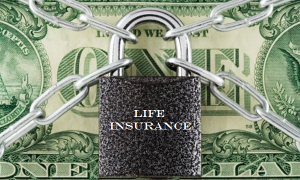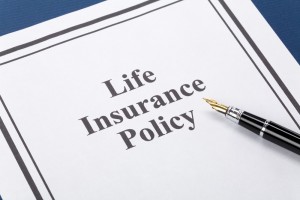
I hate editors.
I say this facetiously, of course. My editor — to whom you can submit your displeasures about this column at [email protected] — omits or rewrites most of my jokes and assertions that lack substance or relevance. Without her, I probably would’ve gotten myself in trouble with my sarcasm and accusations. So, to all the editors out there I say, thank you. Without you, we sometimes say silly things.
This line of thinking is precisely why I thought it would be fun to purchase a first edition, self-published copy of Dave Ramsey’s “Financial Peace,” published in 1992. I can only assume this was published prior to Dave having an editor. Without the protection of a knightly word slayer, Dave Ramsey makes dangerous statements that will live forever on paper. Statements I’m sure he wishes he could take back. Statements that make his current catchphrases — “12 percent rates of return” and “annuities are bad” and “bonds: who needs them?” — look as harmless as a newborn kitten on Christmas morning. So, grab some hot cocoa and a blanket and join me for some wintertime fun.
You’ve read different articles debunking Dave’s 12 percent proclamation. Some with lots of math and some that are hard to follow. I hope this doesn’t fall in that latter camp. As Dave Ramsey often touts, common sense can go a long way. So, we’re going to use actual returns from the S&P 500, starting the year his first book was published.
The predecessor to the 12 percent return
The real fun begins with a fact few are aware of: Dave hasn’t always believed in 12 percent returns. He hasn’t always used average rates rather than compounded rates. Prior to having an editor, Dave didn’t tell people to count on 12 percent; he told them to count on 18 percent. Today, he asserts the 12 percent rate with near certainty by citing past results and personal experiences as proof. But, like a doomsday prophet who uses Nostradamus writings as a formula to predict our last days, Dave recalculates and re-advises when the proclaimed date — or, in this case, rate of return — doesn’t come to maturation as prophesied.
Before I show how Dave’s first rate-of-return promise undermines his current claims, let’s look at another piece of contrary advice. Dave Ramsey has become famous, in part, for his seven baby steps. Baby step No. 1 is “Save $1,000.” It’s not enough! I’ve argued this ad nauseam. Dave is wrong with baby step No. 1 and he knows it. In chapter 8 of “Financial Peace,” we find proof of this. Dave writes that “a good financial planner will tell you that FIRST you should have three to six months of income in savings that are liquid, just for emergencies.” He goes on to say, “If you make $36,000, you should have $9,000 to $18,000 where you can easily get it BEFORE you do ANY other investing.” (All capitalizations were as written by Dave.)
Maybe you’re thinking that, way back then, Dave didn’t realize most people found it hard to save even $1,000. (By the way, $1,000 today was approximately $590 dollars in 1992, according to dollartimes.com.) We find out pretty quickly that this isn’t the case. At the bottom of page 64, Dave writes, “I know this seems like a lot of money, especially when most only have $1,000 in the bank now, but here is why the experts tell us we should save so much.” He goes on to explain why it’s important to save at that higher rate. So, Dave’s math is either wrong then, or it’s wrong now.
In other words, Ramsonites who cite how Americans are saving more under Dave’s influence do so with as much accuracy as Dave predicts future rates of return. By his own admission, he is now getting people to save either a) less than what he said experts stated was necessary or b) only about half of what they were in 1992. Neither of those seem like very promising scenarios.
OK, back to the story. Remember, we’re discussing why Dave doesn’t actually believe in a 12 percent rate of return. In fact, in my humble opinion, he didn’t truly believe in 18 percent way back then, and here’s why. In his 1992 book, Dave uses this example: A 25-year-old saves $1,000 one time and does not make any withdrawals. He writes:
“At 6 percent per year, you should have just over $10,000 at age 65; so, if we double the interest rate to 12 percent, you should have around $16,000, right? WRONG!!! You will have just over $93,000 at 12 percent at age 65. That is compound interest working for you and you see the multiplication effect rather than the addition effect that most may have thought.”
He then raises the rate to 18 percent, which he proclaims, “many good, solid mutual funds have.” At 18 percent, the end tally is $750,378.
Wait, so you’re telling me that the folks in, say, 1995 who read this book and then planned on an 18 percent rate of return are OK? I mean, Dave typically says, “Hey, if I’m wrong and it’s only a few points below, then they’re still OK, right?” He says us math nerds are arguing about a few inconsequential dollars. Hmmm. I’d love to live in a world where the difference between $750,378 and $93,000 was only a few dollars.
First, we must consider why Dave Ramsey changed his 18 percent rate of return projection. Eighteen percent is far more fun than 12 percent. It seems odd that he would change his mind on this, considering that he says mutual funds can easily make 14 percent (page 70). He even says that top funds have “averaged between 20 and 30 percent” over the last 10 years. OK, I went too far. I must be fibbing. Nope … you can find this fallacious statement on page 127 of “Financial Peace.” Like today, it’s hard to spot even a slight crack in Dave’s foundation of confidence surrounding the declaration of returns.
Given all of these confident statements, why does Dave use 12 percent now? Will he revise this number to be lower in the future?
The answer is simple: In every 10-year period since Dave wrote “Financial Peace,” the S&P 500, using annual returns, hasn’t matched the 12 percent promise, let alone the 18 percent. Based on the cold, hard evidence, Dave would have been forced to revise his 18-percent projection. I’ll get back to this, though.
A close look at the numbers
Let’s say the brazen Ramsonite who follows this path dreams of retiring with $300,000 in savings and investments. In order for this to be reality, the follower will need to save about $900 per month for the next 120 months (10 years).
Obviously, $300,000 isn’t very much, considering Dave often touts everyone should be able to retire a millionaire by saving nearly $1,000 per month. Saying things like, “Everyone should easily become a millionaire while saving nothing but 3 cents per day” sounds fun, but it’s akin to assuming everyone will drive slower in the snowy conditions of West Michigan in January. The reality is many won’t. But just for fun, here’s a chart with the annual return of the S&P 500 for each year since “Financial Peace” was published.
| YEAR | Return | YEAR | Return | YEAR | Return |
| 1992 | 4.46% | 2000 | (10.14%) | 2008 | (38.49%) |
| 1993 | 7.06% | 2001 | (13.04%) | 2009 | 25.45% |
| 1994 | (1.54%) | 2002 | (23.37%) | 2010 | 12.78% |
| 1995 | 34.11% | 2003 | 26.38% | 2011 | 0 |
| 1996 | 20.26% | 2004 | 8.99% | 2012 | 13.46% |
| 1997 | 31.01% | 2005 | 3.0% | 2013 | 29.60% |
| 1998 | 26.67% | 2006 | 13.62% | 2014 | 11.39% |
| 1999 | 19.53% | 2007 | 3.53% |
At first glance, the 12 percent rate — heck, even the 18 percent rate — looks like it might be true. But, oh, how the eyes can deceive. Has anyone else watched the magic tricks done on the sidewalks of the Vegas strip?
We’ve determined that our Ramsonite is saving $900 per month, right? When we’re adding money, the ending balance is affected by how much money we put in and, of course, by when we put it in. So, an account with a $100,000 balance and a 10 percent return is affected more than one with a $10,000 balance.
The charts below illustrate this. One shows each ten-year period and return, using the S&P 500 since “Financial Peace” was published. The second chart shows the ending balance of our hypothetical Ramsey follower investing $900 every month — no more, no less — for each 10-year period, same as before.
| Period | Return | Period | Return |
| 92-01 | 11.53% | 99-08 | 3.44% |
| 93-02 | 5.27% | 00-09 | 1.52% |
| 94-03 | 7.88% | 01-10 | 3.93% |
| 95-04 | 6.94% | 02-11 | 3.56% |
| 96-05 | 4.99% | 03-12 | 5.19% |
| 97-06 | 5.62% | 04-13 | 9.30% |
| 98-07 | 4.86% | 05-14 | 10.24% |
| AVG. | ALL | PERIODS | 6.01% |
| Period | End Bal. | Period | End Bal. |
| 92-01 | $201,490 | 99-08 | $91,471 |
| 93-02 | $141,791 | 00-09 | $116,555 |
| 94-03 | $163,597 | 01-10 | $132,032 |
| 95-04 | $155,239 | 02-11 | $129,482 |
| 96-05 | $139,714 | 03-12 | $141,213 |
| 97-06 | $144,463 | 04-13 | $177,182 |
| 98-07 | $138,715 | 05-14 | $186,930 |
| AVG. | ALL | PERIODS | $147,133 |
OK, so lots of math. Hopefully I didn’t give anyone paralysis of the analysis. What does this all really mean? It means this: At an 18 percent rate of return, the Ramsey follower would have $300,000, but, even at a 12 percent rate of return, they’d still have a bit more than $200,000 (using compounded, since, based on his quote above, Dave makes it clear that he’s referring to compounded). However, since publishing “Financial Peace,” the average 10-year compounded rate is only 6.01 percent per period. Furthermore, the average ending balance is less than half of what his readers in 1992 would have expected and that’s IF — a big IF — they followed the path despite seeing far less favorable results.
Let’s look more closely at this six percent. Do you remember the example I cited earlier? Dave used a 6, 12 and 18 percent compounded rate of return. The 6 percent was only $15,000. That’s a far cry from the nearly $750,000 excited readers would have counted on.
Why did Dave change from 18 percent growth to 12 percent growth? It’s simple: The 18 percent was horribly far off from reality. At Dave’s current 12 percent fallacy, he states that followers can withdraw 8 percent of the account balance each year because then they’re still making 4 percent. Oh, Dave, if only this were true. Below is a chart, again using just the plain old S&P 500. I used every 10-year period available after the initial 10-year period of accumulation. I also assumed the average 10-year balance from above $147,133, and used an 8 percent rate of withdrawal, or, in other words, $980 per month.
| Period | End Bal. |
| 02-11 | $53,044 |
| 03-12 | $117,715 |
| 04-13 | $89,507 |
| 05-14 | $86,855 |
| AVG. | $86,780 |
After 10 years, the average remaining balance is $86,780. But Dave claims that if you’re earning 12 percent — which you should at least earn, considering he used to proclaim 18 percent — and you’re only withdrawing 8 percent annually, then your balance will continue to grow. Fact or fiction? Clearly fiction. Not one 10-year period exceeded the initial principal amount. In fact, since 1992 this statement would only be valid six times (coincidentally, between 1992 and 1997 consecutively, and never since).
Knowledge matters
Editors help us from saying stupid things. For example, in the About the Author section of “Financial Peace”, Dave states that he “ … has held mortgage brokers and securities licenses.” From this we can infer that, by the time this book had published, his securities license had already lapsed. Twenty-five years later, with only a few years of industry experience that occurred prior to the Clinton administration (I hope I never have to qualify that as the “Bill Clinton administration …”), Mr. Ramsey proclaims to be an expert on something he’s not.
I thought about showing a table with more than 10 years of accumulation, or a table comparing rates of returns of fixed annuities and cash value life insurance (adjusted for cost of insurance), but then readers would have focused on whom they believe again. Instead, the intent here was to show everyone that, from the start, Dave has been projecting horribly inaccurate future rates of return — so much so that he was forced to significantly reduce future projections. Furthermore, the numbers show his current rate is still greatly exaggerated in comparison to the reality we’ve witnessed since he started his brigade. The math of the real time periods since Dave started shows he is wrong. Way wrong. Are you willing to trust him, simply because he’s entertaining? I’m not.
As a wise(ish) man with a few years of professional securities experience once wrote:
“Ignorance is not lack of intelligence; it is lack of knowledge on a particular subject.”
— Dave Ramsey, “Financial Peace” 1992.
As always, thanks for walking down this path with me. If you see something you’d like us to address from American’s “Favorite” finance coach, please email my editor at [email protected].













